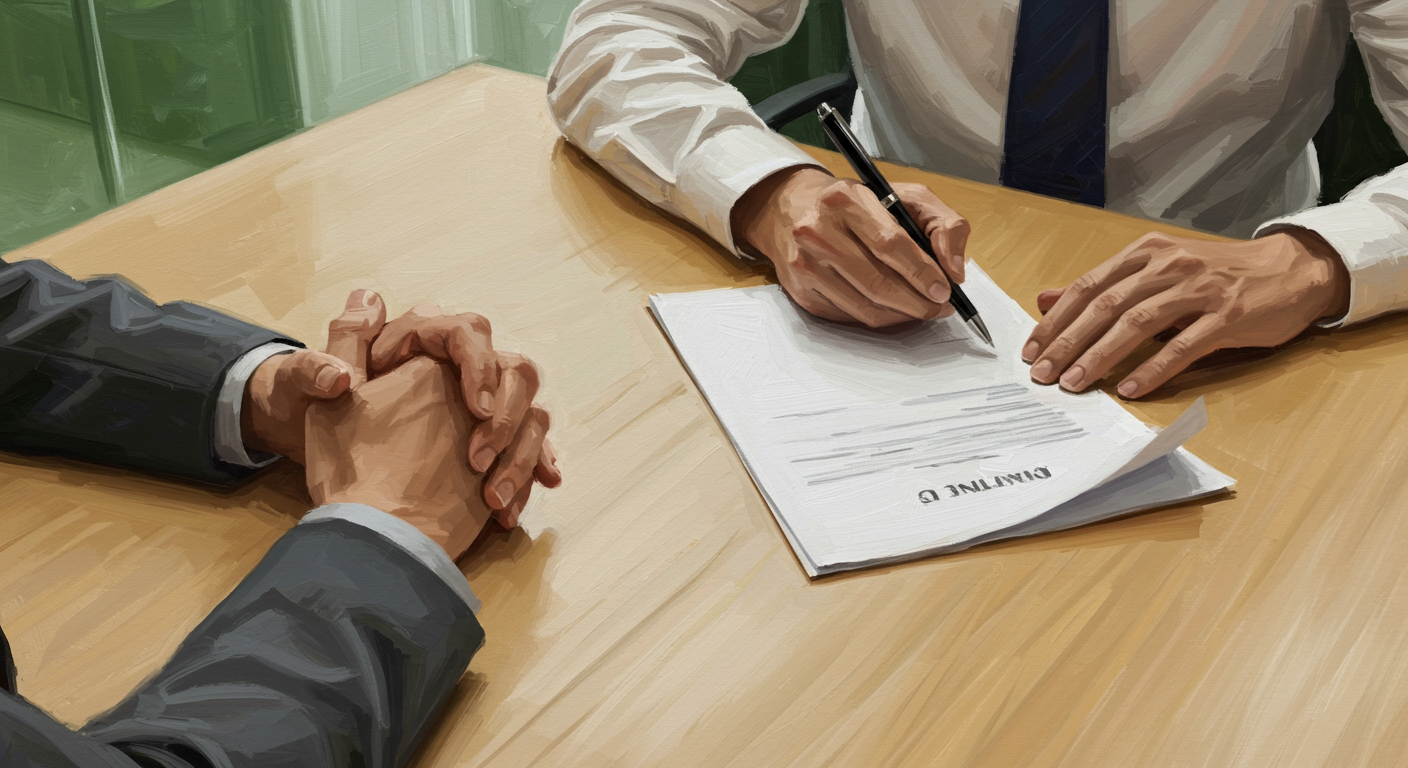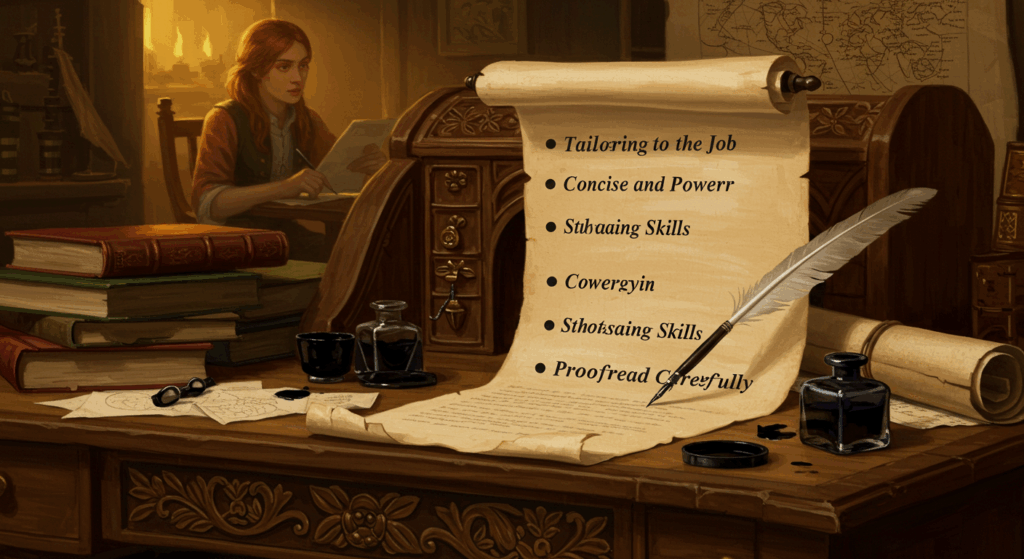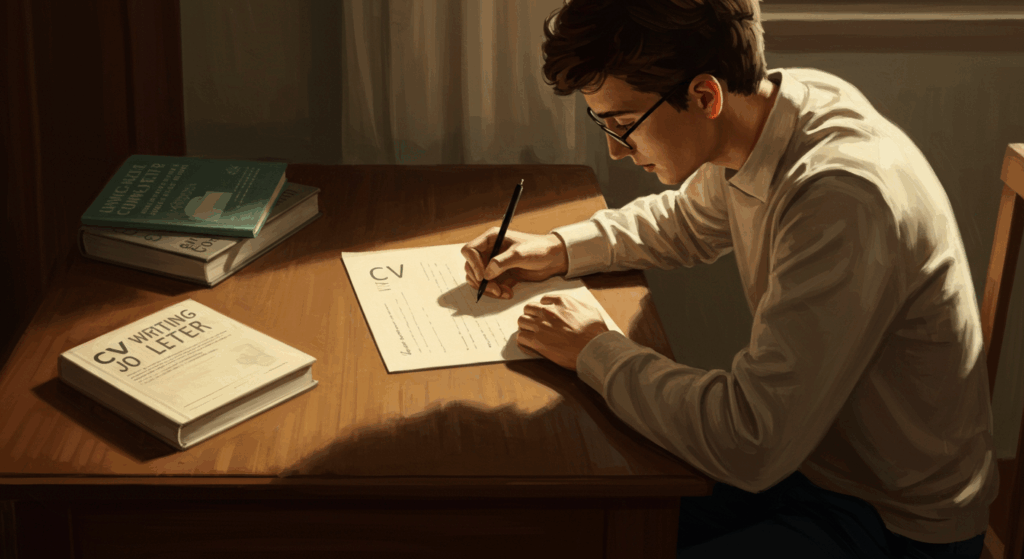Okay, so you’re sitting at your laptop, job posting pulled up, iced coffee half-melted, and there it is: that dreaded line—“Please attach a cover letter with your application.” And suddenly your brain’s like, nope, we’re out, let’s scroll TikTok instead.
I get it. Writing a cover letter can feel like trying to comne up with the perfect first message on a dating app: too boring and you get ghosted, too much effort and you seem desperate. The balance is tricky. That’s why today we’re gonna talk about cover letter resources—the stuff that’ll actually help you instead of leaving you staring at a blank doc until your Spotify playlist loops for the third time.
This isn’t gonna be some dry “academic” breakdown. Think of this as me giving you the ultimate cover letter guide, packed with cover letter tips and solid cover letter help to make the whole thing feel less like torture and more like… okay, not fun, but at least manageable.
Why Cover Letters Still Matter (Yeah, Sorry)
Before we dive into the resources, let’s just admit the truth: cover letters are still hanging around, and they’re not leaving anytime soon. I know—it feels unfair. Like, why can’t my resume and LinkedIn just do the talking?
Here’s why they matter:
- They show extra effort. Recruiters can spot when you’ve taken time.
- They reveal personality. Your resume says “skills,” but your cover letter says “vibes.”
- They connect the dots. Switching industries? Took a gap year? You get to explain yourself.
So yeah, they’re annoying, but think of a cover letter as the little story behind the highlight reel.
The Basics: A Quick Cover Letter Guide
When it comes to resources, the first thing you need is just a solid cover letter guide that explains the flow. No fluff, just structure.
Here’s the simplest way to think of it:
- Header: Your info + the hiring manager’s info.
- Intro: Say hi, state the role, hook them.
- Body: Talk about your skills, share examples, show how you fit.
- Closing: Wrap up confidently, thank them, invite a convo.
If you remember nothing else from this article, remember that structure. Keep it one page. Think of it like a trailer, not the whole movie.
Cover Letter Tips You’ll Actually Use
Alright, let’s get into the meat: cover letter tips that make a difference. Because “be professional” is… not that helpful, lol.
- Use a name if you can. “Dear Sarah” > “To whom it may concern.” Always.
- Hook early. No recruiter wants to read “I am writing to apply…” again. Start with something memorable.
- Tell mini stories. Instead of saying “I have strong leadership skills,” try: “I led a five-person team to launch a campaign that boosted engagement 45%.”
- Match the tone. If it’s a startup with memes on their website, loosen up. If it’s a law firm, keep it buttoned-up.
- Keep it short. 3–4 paragraphs. Max one page.
These tips might sound simple, but they’re the difference between “meh” and “wait, let’s interview this person.”
Where to Find Cover Letter Help Online
Now for the good stuff: where you can actually find cover letter help that doesn’t suck.
- Templates: They’re everywhere, but be careful. A template is a good starting point, but don’t use it word-for-word. Recruiters can smell that copy-paste energy.
- Writing samples: Look for examples from people in your field. A marketing cover letter is different from an engineering one.
- Guides & blogs: Sometimes the best resources aren’t official. Real people share real tips that feel less robotic.
- Career centers: If you’re in school (or just graduated), your career center probably has free cover letter workshops or one-on-one coaching.
- Friends in the industry: Honestly? Ask a friend. Someone one step ahead of you can give way better feedback than a random forum.
The key here: don’t overwhelm yourself with 47 different resources. Pick one guide, one example, and go from there.
Examples That Work (And Why)
Okay, so you’re probably thinking, “Cool, but what does this actually look like?” Here are a few sample vibes:
The Casual-but-Confident Intro
Dear Jamie,
I’m applying for the Social Media Manager role at Bright Co. Honestly, making content that doesn’t make people cringe has turned into my weird little superpower. At my last job, I grew Reels engagement 300% in three months.
Why it works: It’s fun, specific, and still professional enough.
The Career Switcher
Dear Hiring Team,
After five years teaching high school English, I’ve mastered grabbing attention, simplifying info, and keeping people engaged (even before 9 a.m.). Those skills make me excited to move into your Learning & Development team.
Why it works: It explains the switch and shows transferable skills.
The Straight-to-the-Point Pro
Dear Sarah,
I’m applying for the Project Manager position at Bold Systems. Over the past three years, I’ve led cross-functional teams that finished 90% of projects ahead of schedule. I’d love to bring that same precision and energy to your team.
Why it works: It’s direct, confident, and shows results.
Use these as inspiration, but always tweak them to sound like you.
Free vs Paid Cover Letter Resources
So should you pay for tools or just stick to free stuff? Honestly, it depends.
- Free resources: Templates, blogs, YouTube breakdowns, your school’s career office. Perfect if you’re broke (been there).
- Paid resources: Resume/cover letter services, professional coaching, or premium templates. These can be helpful if you’re applying to a very competitive role and want an edge.
Hot take: for most jobs, free resources + a little personal effort = more than enough.
Cover Letter Help for Different Situations
Not all cover letters are created equal. Sometimes you’ll need to adjust based on your situation.
- First job: Focus on transferable skills—school projects, internships, part-time jobs.
- Career change: Explain the why. Show how your old skills connect to the new role.
- Gap years: Be upfront but positive. Mention what you learned during that time.
- Creative roles: Show more personality. Humor, storytelling, a unique hook.
- Corporate roles: Keep it polished, but still human.
Knowing which angle to take is half the battle.
Common Mistakes to Avoid (Seriously, Don’t Do These)
Let’s save you from the most common cover letter crimes:
- Typos. Triple-check. One typo is fine, five looks sloppy.
- Being too formal. “It is with utmost pleasure that I apply…” Ew. Skip it.
- Being too casual. “Sup dudes, hire me?” Also ew.
- Repeating your resume. This is not just a paragraph version of your CV.
- Sending the same one everywhere. Customize. Always.
Quick Recap for the Scrollers
Because let’s be honest, some of you are skimming (hi, I see you). Here’s the TL;DR:
- Use a cover letter guide to nail the structure.
- Follow simple cover letter tips like personalizing, storyteling, and keeping it short.
- Get cover letter help from resources that make sense for you (career centers, friends, or templates).
- Avoid common mistakes like typos and boring intros.
- Always make it sound like you.
Final Thoughts: You’ve Got This
Look, I know cover letters feel like a drag. But with the right resources, they don’t have to be painful. Think of it as a chance to tell your story—to show that you’re more than just bullet points on a resume.
The best cover letters aren’t perfect; they’re authentic. They sound like a human, not a robot. So take what you’ve learned here, use the resources that vibe with you, and just start typing. The first draft doesn’t have to be pretty. You can fix it later.
So go ahead. Open that doc, drop in your name, write a messy intro, and keep going. You’re closer to landing that job than you think.
And when you finally hit send? Treat yourself to a snack, some Netflix, or a quick nap. You earned it.









